Imagine walking around and being able to taste everything you walk across or everything you touch with your hands…Yuck! Well that is exactly what happens with all star fish or what researchers now call sea stars. All of their appendages are called arms and they can regrow them, which usually takes a couple of months, although some species can regrow them very quickly.
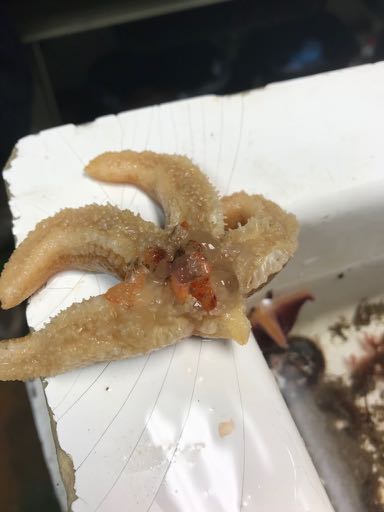
On their arms they have hundreds and hundreds of tube feet which come in a variety of shapes and have different functions, like suction cups, or little shovels. The tube feet also act as the sea stars' tongues.
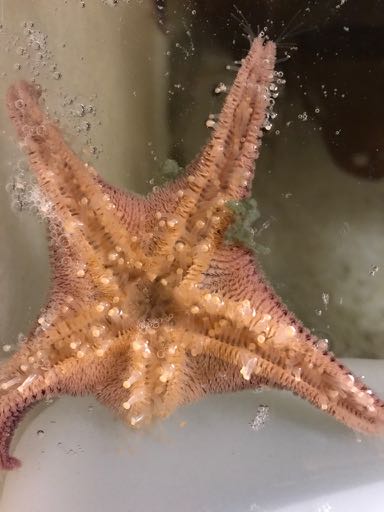
In the sea star assay I am helping out with, with Maggie Amsler, we're feeding the extract pies (that I talked about in an earlier journal) to the sea stars to see if they like the taste of the chemical extract.
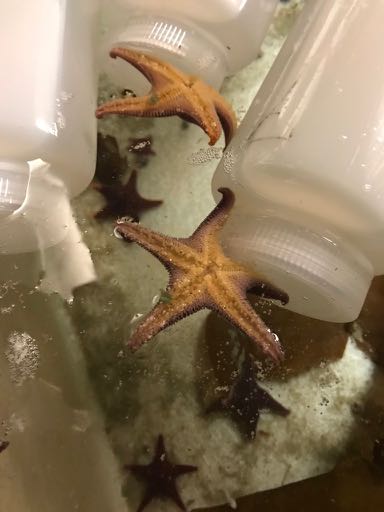
We begin by placing a piece of pie midway down the arm, and using the tube feet the sea star either moves the pie towards its mouth, or pushes the pie off its arm if it doesn’t like the taste.
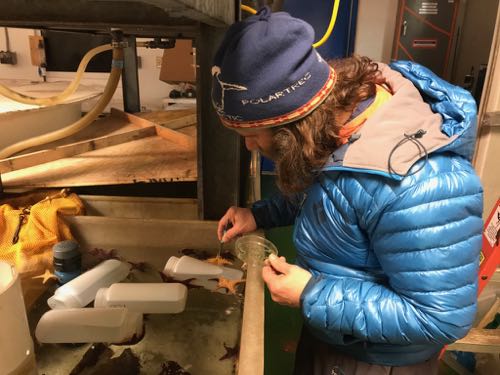
To actually eat, the sea stars have two options because they have two stomachs. Cardiac, which they can send outside their body. So let's say they see a clam that is shut, they can send out their stomachs and work their way through the opening of the clam and start to digest it from the inside out.
Pyloric stomach, which is the interior stomach, connects to the pyloric ceca which goes out to each one of the arms where it stays until it is used.
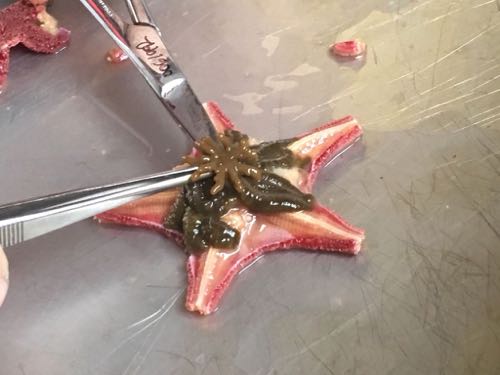


Comments